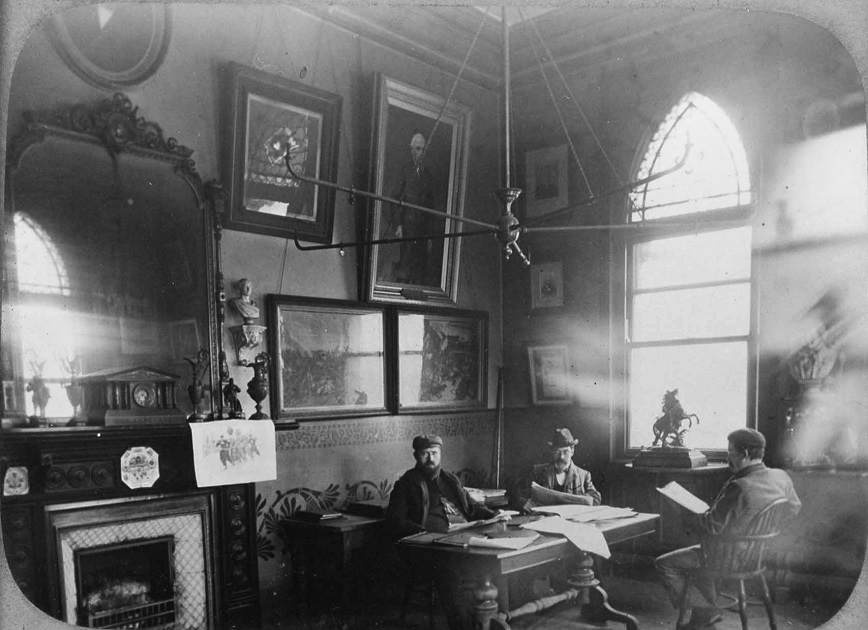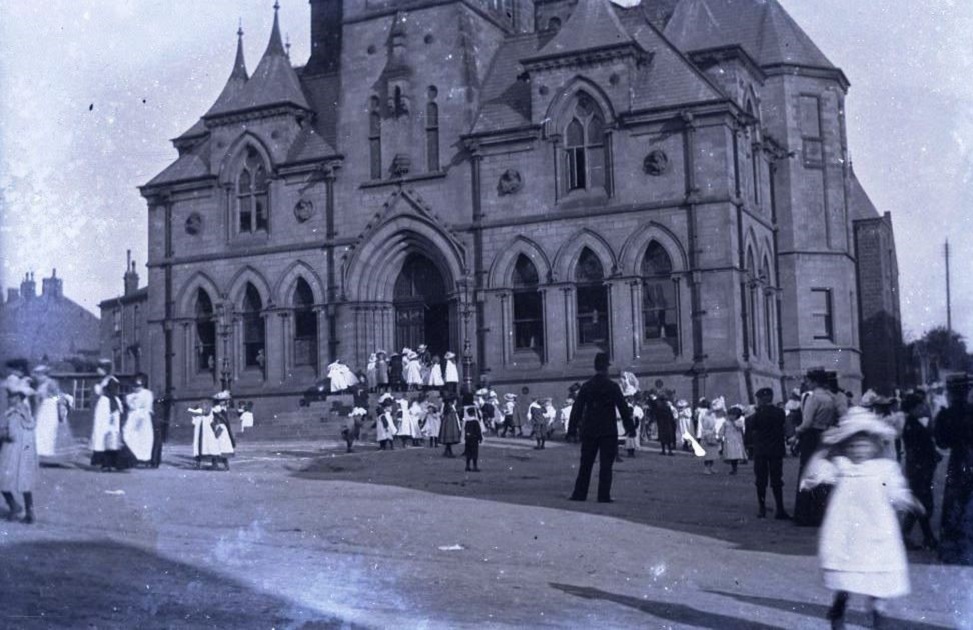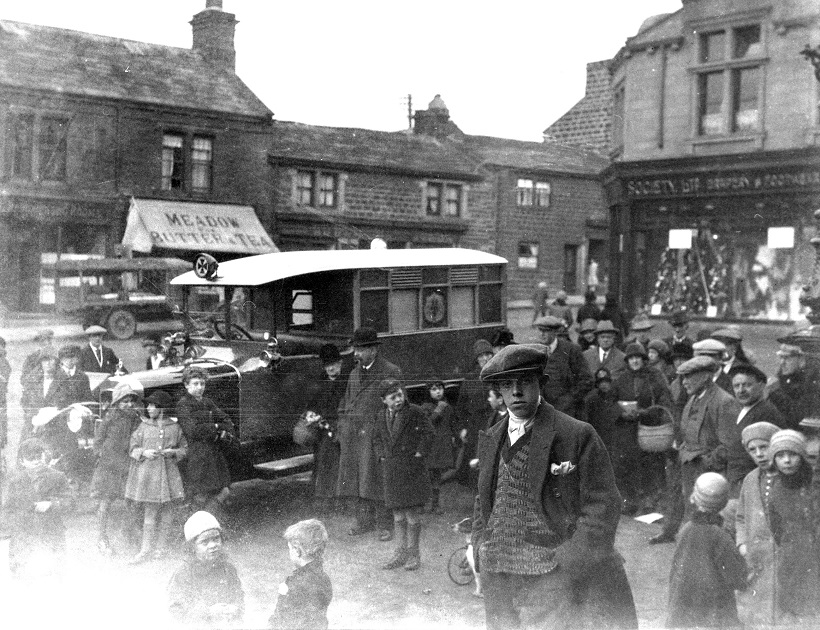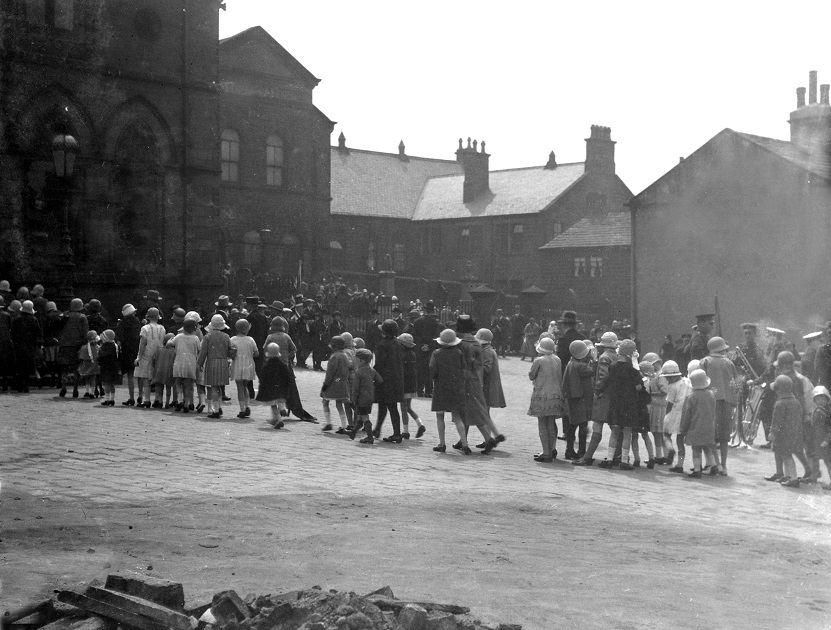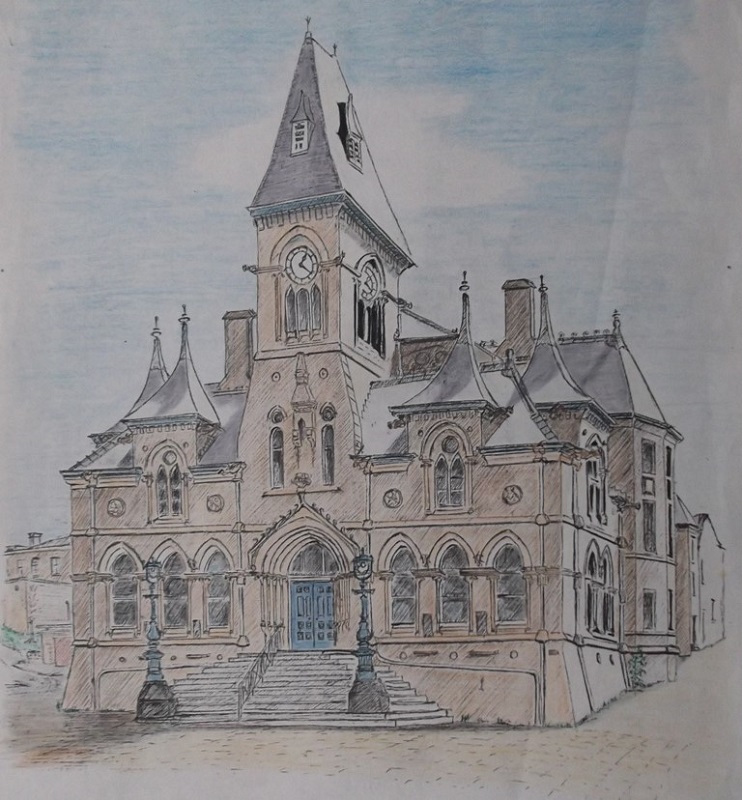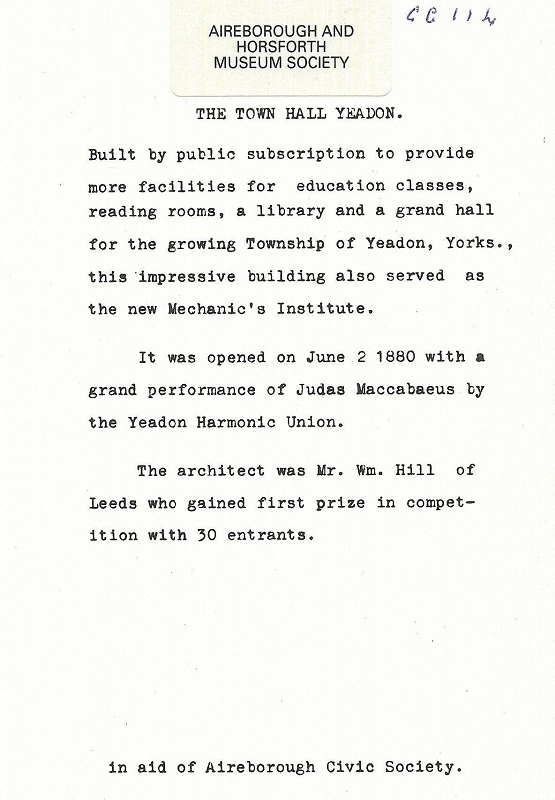| Title | Town Hall |
| Date | Undated |
| Location | Yeadon |
| Photo ID | B414 |
| Comment | When the Town Hall opened in 1880, there were other properties in front of it. The Old School, Poll Marsden’s lodging house and a shop owned by Holgate. These were demolished in 1925 to provide the paved area in front of the Town Hall “Town Hall Square”. |
Town Hall – c1900
A crowd has gathered on what would become Town Hall Square, a St. John Ambulance is the focus of attention.
On the High Street a branch of the Meadow Dairies has a sun blind pulled down, on the right side is the Leeds Industrial Co-operative Society store, now Yeadon Library.
The image was taken on a glass slide by E E Slater.
Town Hall – 1920s
The shop on the left was once the business of Mr Holgate, a game dealer. In this view it appears to be a sweet/grocers shop.
Moving right, the gable end belongs to a property on Starkey’s Field, next is Cliffe House.
In front of the Town Hall are posters advertising a film show, the film was Peacock Alley starring Mae Murray. Released as a silent film in 1921 it was remade in 1930 as a “talkie” again with Mae Murray.
On the right is South View Road, the Primitive Methodist Chapel is here but out of this view.
Town Hall – 1920s
On the reverse is a message addressed to a Mrs Hawkes near Wetherby:
“Dear Mother, just a line to wish you a Happy New Year. Dad has gone to see his father and Alice has gone with him they went last Wednesday morning it has been very quiet here. Wishing you all a Happy New Year ?”
The stamp was issued during the reign of King George V. 1910 – 1936. The Town Hall Square was created in 1925 when old properties in front of the Town Hall were demolished, so the postcard was possibly sent between 1925 and 1936.
Town Hall – 1920s
The Town Hall is on the left. Next is the Primitive Methodist Chapel, there are crowds of people around including many children dressed in their best outfits. To the right is what appears to be a Military Band.
This image was taken on a glass slide by E E Slater.
Previous Comments:
Goose57
An ancestor of mine, Richard Hogg (1834- 1912) was the main builder on the project. Despite being unable to read or write he was a master builder who worked on many projects in the area. He went out of business after not being paid for some large villa houses he built at Ilkley. His son was one of the main builders on High Royds Hospital at Menston. Richard had a yard at Rawdon and lived on Prospect Street. He died virtually penniless. The Town Hall is an incredible building for a small mill town in West Yorkshire. People really had ambition in those days!
17 February 2013.
Page 1 of 3 More >>
Consolidated by Jack Brayshaw. 24 July 2021.
Last updated: 09 January 2023 – All images updated.

